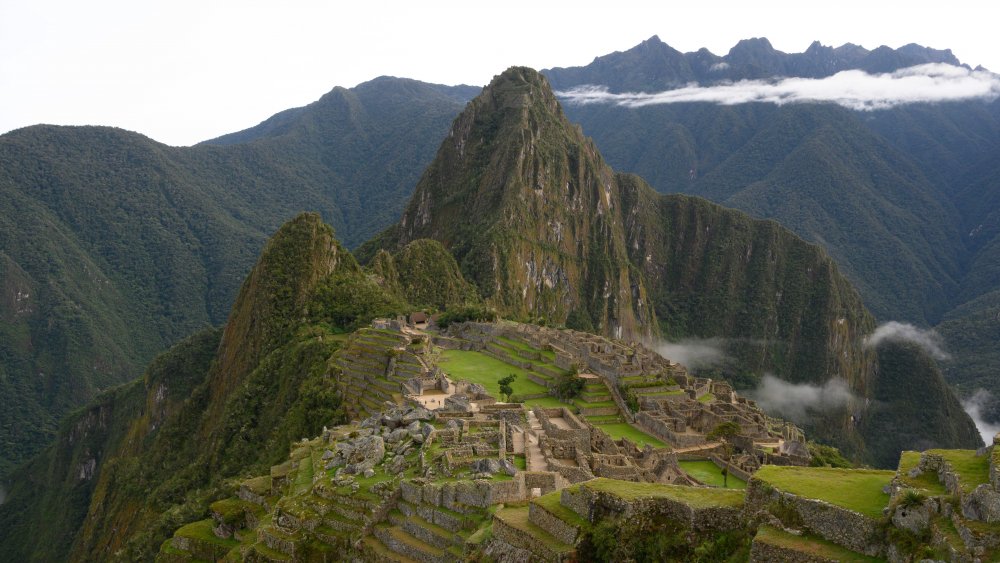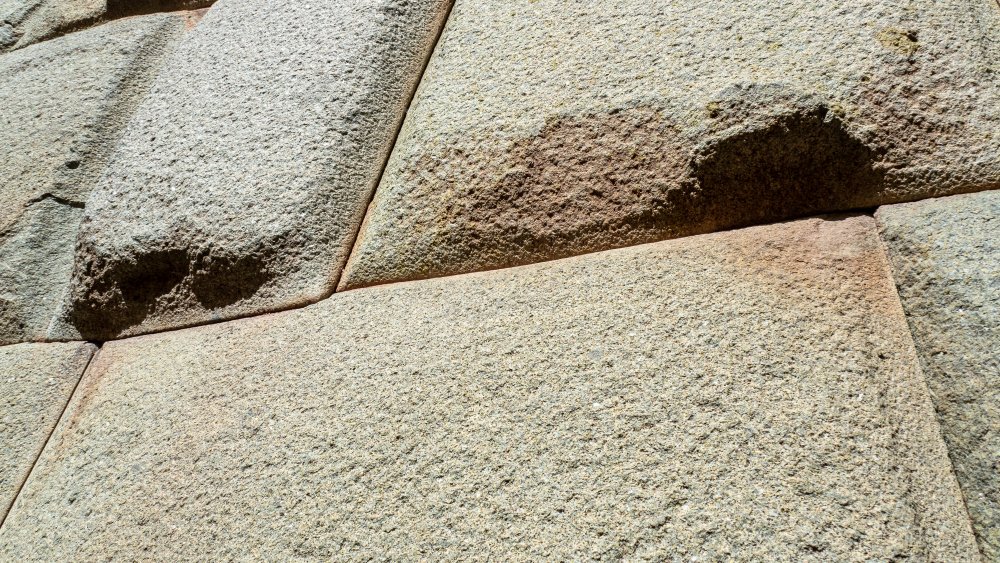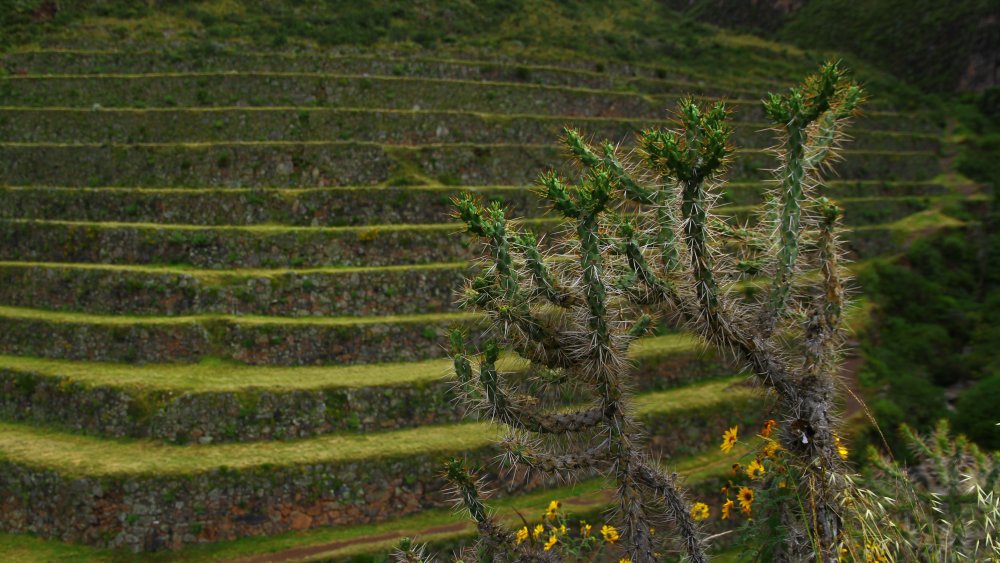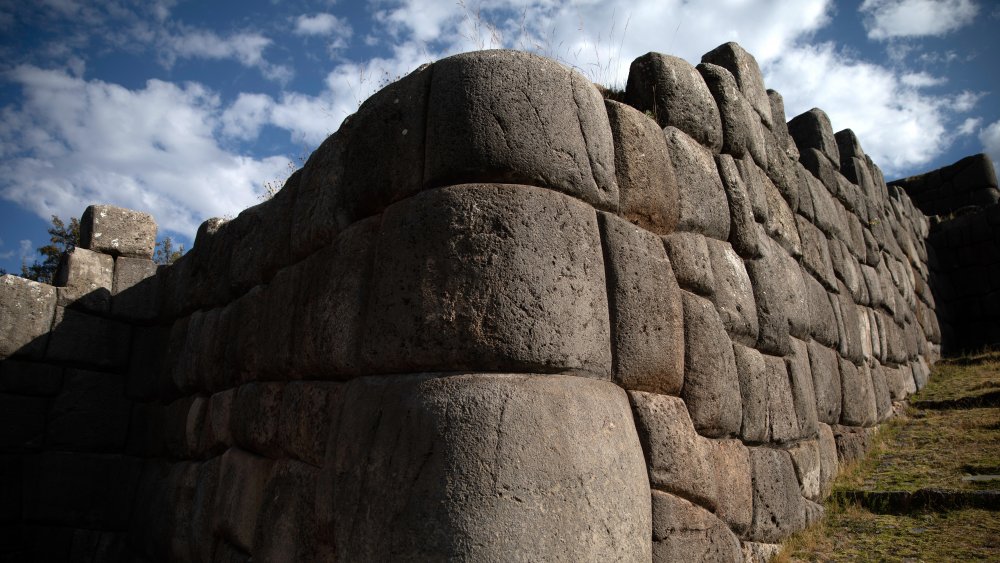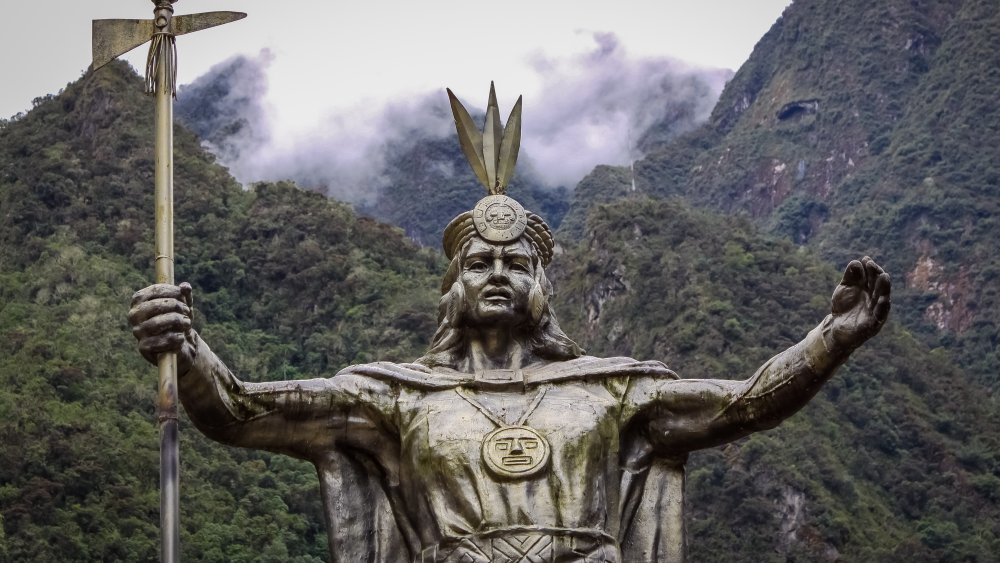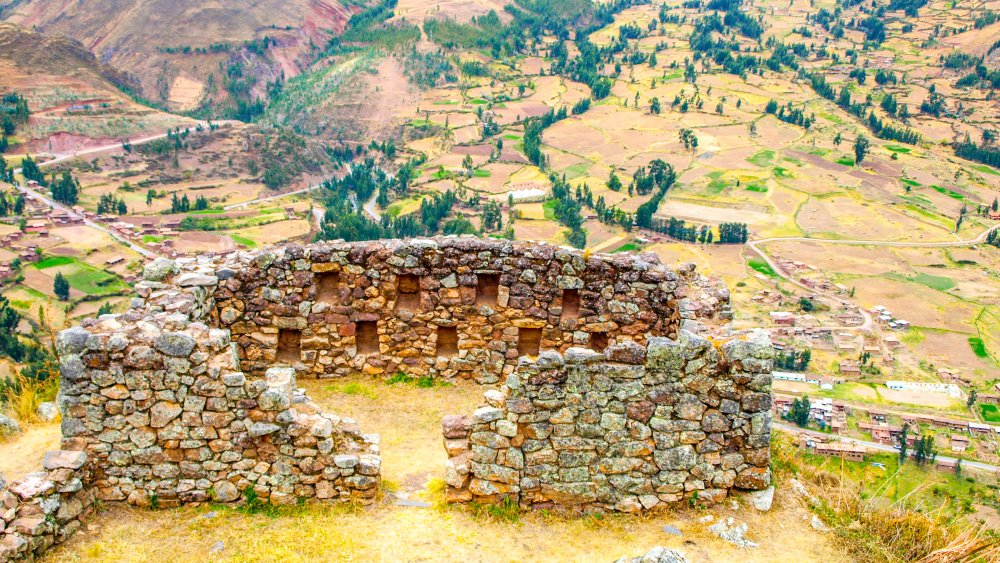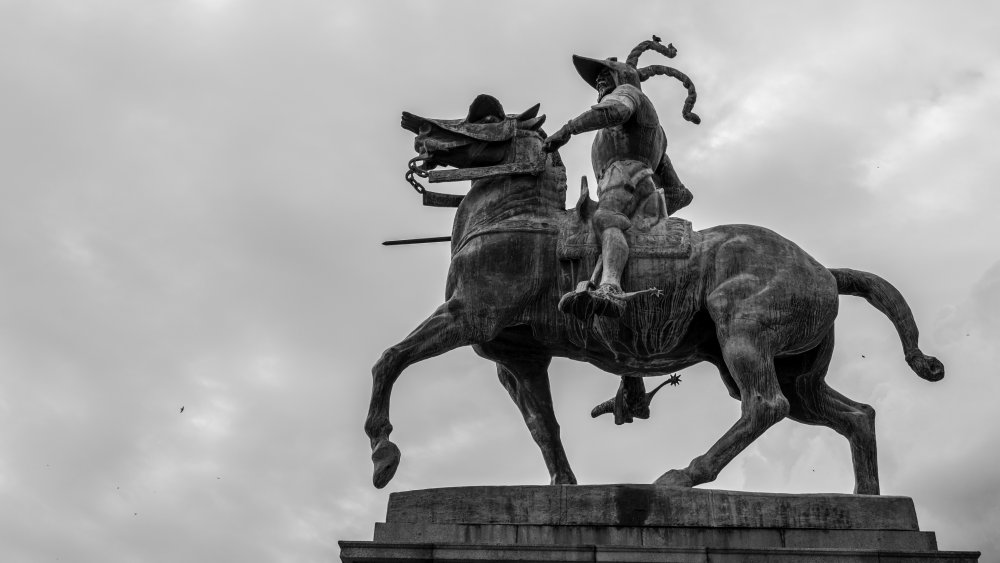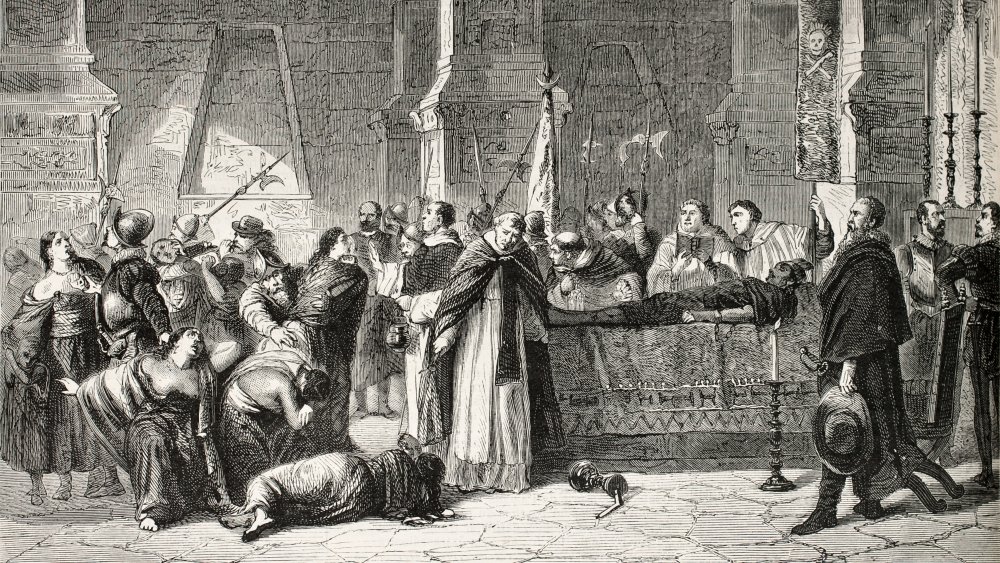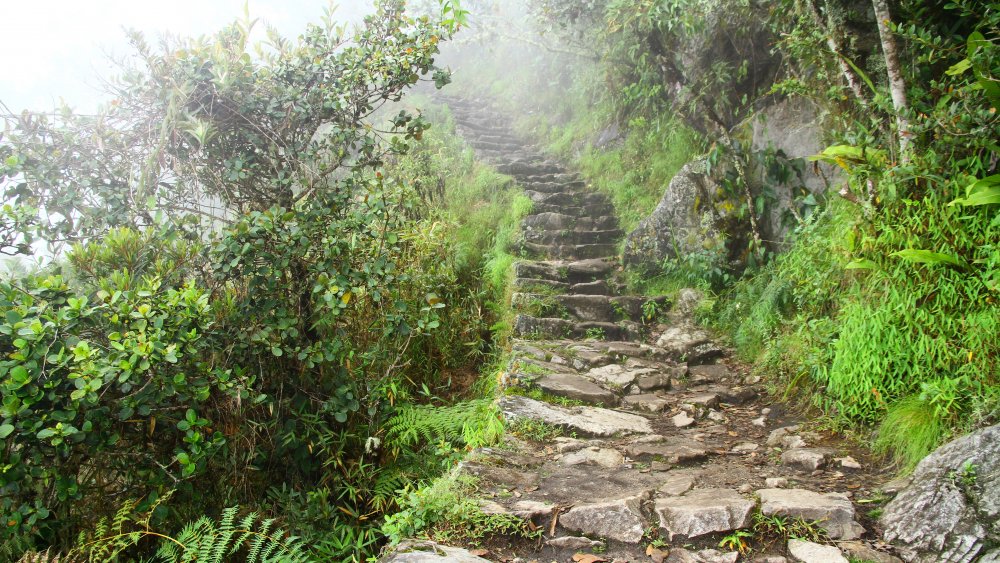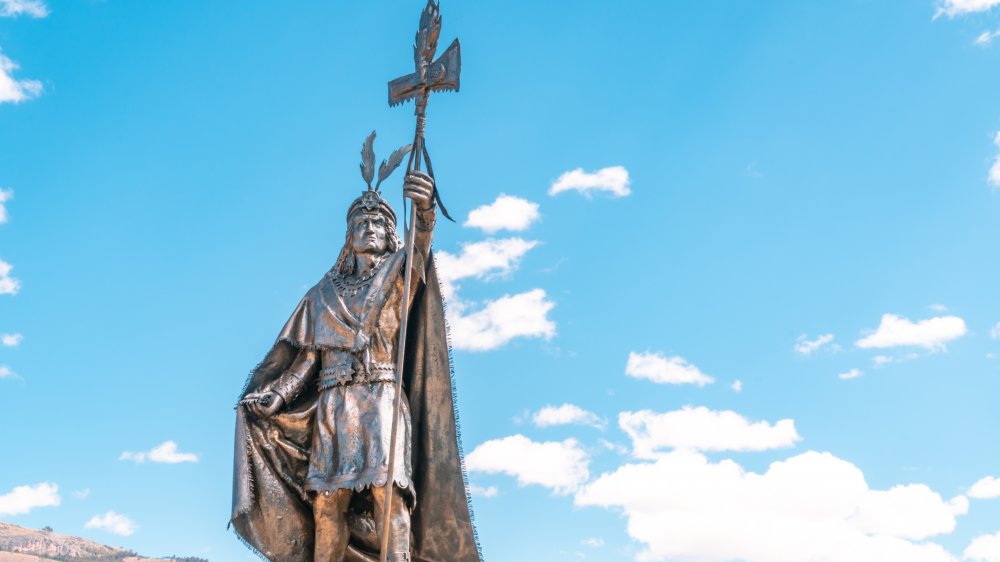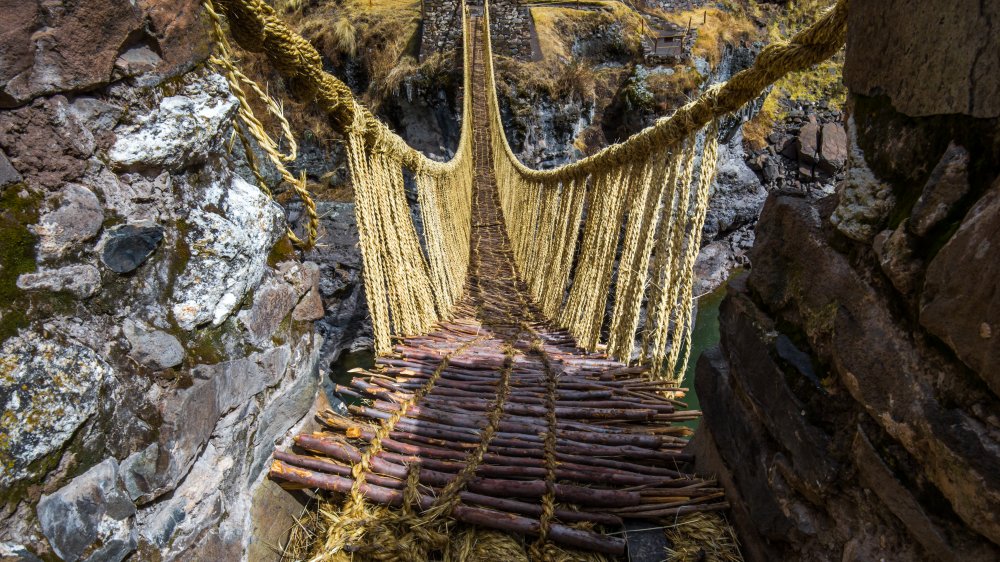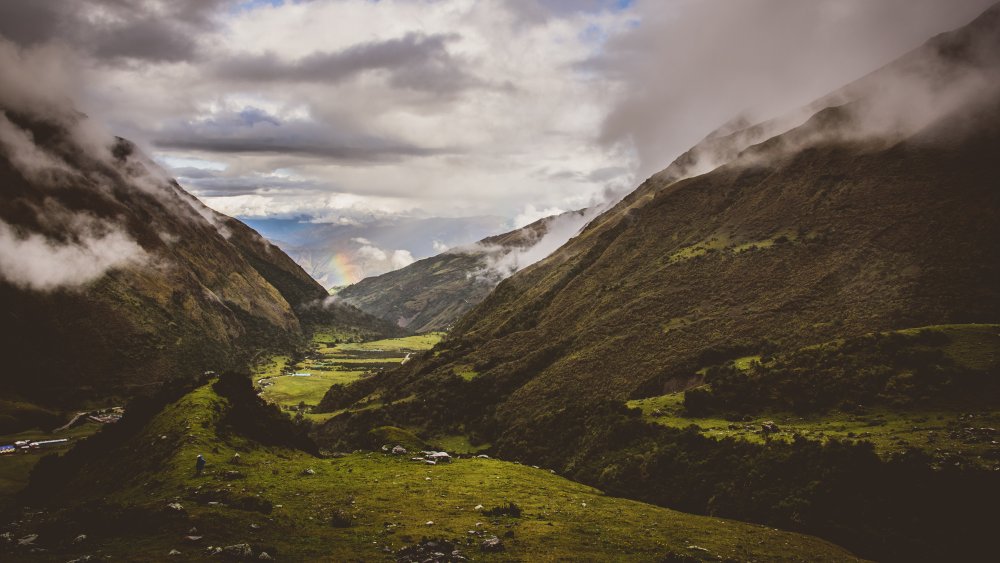We Now Understand Why The Inca Empire Crumbled
The Inca were one of the great civilizations of the so-called New World, and sadly, they're pretty mysterious, too. They actually weren't around for too long — LiveScience says they only really flourished beginning in the early 1400s, and the society's downfall started in earnest in the 1530s. They packed a lot into those relatively short decades, though, including the construction of Machu Picchu (pictured).
And that city alone is a great microcosm of what we know — and don't know — about the Inca. Archaeologists have been studying it for a while, but still aren't sure what many of the buildings were used for.
One of the big problems — well, for archaeologists, at least, the Inca themselves were probably fine with this — is that they didn't develop a system of writing. That lack of information has left modern historians scratching their heads, and what's even more confusing is that most of what we know comes via their conquerors — the Spanish. And how honest were they? No one can really be sure, but archaeologists have made major strides in putting together a picture of just how and why this once-powerful civilization disappeared ... and here's the story.
The Inca Empire contained a lot that needed to be destroyed
Modern civilization has a lot to be proud of, sure, as it's managed to build all kinds of sprawling empires. But it's worth a quick aside to talk about just how huge the Inca Empire was — and how much needed to be conquered before it disappeared into the history books.
The first Inca were around somewhere about 1200, but it wasn't until 1438 that emperor Pachacuti decided it was time to start conquering and expanding their civilization. According to NOVA, the Inca called their empire Tahuantinsuyu, or the Land of the Four Quarters. It covered around 2,500 miles from north to south, and for a bit of comparison, that's about the same distance as it is between New York City and Los Angeles. That distance was covered by somewhere between 14,000 and 25,000 miles of roads, and many of them are still perfectly usable today.
At the height of power, there were around 10 million Inca subjects. They were brilliant artisans, elevating the cloth and textile industries into an art form, and were such skilled builders that none of their buildings needed mortar, but fit together so well, LiveScience says, that even today, you can't slide a razor blade between the stones. An empire of that size would be both a blessing and a major problem.
The Inca had extraordinary wealth and a strange economy
One of the things we do know about the Inca is that they had a very strange economy. They were insanely rich ... but had no money, no marketplaces, and no system for trading within the empire.
There was just no need. According to historian Gordon Francis McEwan (via io9), everything from the production to use of goods like food and clothing was controlled by the government. Citizens would be given all their necessities from state-run storehouses and in turn, they would spend time working on things like roads and other infrastructure (like the crop terraces pictured). It's been suggested there's a very good reason for this — the environment their empire sprawled across is incredibly difficult, and they needed to focus on staying alive, not trading bits and baubles with arbitrary worth.
They did, however, have a ton of gold and silver. According to NOVA, the city of Cuzco contained palace after palace of riches. Tradition stated that each king who took power didn't receive his predecessor's treasure, but instead built his own palace with his own wealth. Temples, gardens, statues, and even roads glistened and glittered with gold, and there was so much that the conquistador Ciezo de Leon admitted there were "... things, which, if I wrote down, I should not be believed." And that is one of the main reasons they were targeted by the Spanish. There was just so much wealth the conquistadors just couldn't resist.
The Inca had been fractured by civil war
It was 1528 when Spanish conquistador Francisco Pizarro made first contact with the Inca — that was the year his expedition captured a treasure-laden raft off the coast of South America (via Ancient History). At the time, all was not well within the Empire.
That was also the year that smallpox took the life of both the Inca ruler Wayna Qhapaq and his heir, leaving a power vacuum at the top. What followed were years of civil war as Wayna Qhapaq's sons, Atahualpa and Huascar fought for the throne. By the time the Spanish made it inland and made contact in 1532, the Inca were in the midst of open warfare, a breakdown in diplomatic relations, and a lot of bitterness — and death — on both sides.
Atahualpa came out the ultimate winner, but it was a victory that, in hindsight, he probably shouldn't have been too keen on claiming. He captured his brother, killed off close relatives, and lived a life of luxury that went above and beyond even by Inca standards. The Spanish met a ruler who was fed by a servant, wore silver-plated sandals, and requested cloaks made only from bats. Sure, he — the illegitimate son many viewed as a pretender to the throne, SA Expeditions notes — came out on top, but the conflict left the nation deeply divided — which was great for the Spanish.
A series of rebellions chipped away at the Inca Empire
Life among the Inca was far from idyllic, and problems started right from the beginning. When the Inca ruler Pachacuti (pictured) decided to start expanding his civilization and conquering those around him, he began by giving anyone who spoke the Inca language, Quechua, noble status. It was this original, core group of people who were the only ones allowed to hold government jobs and positions of power, and eventually, about 40,000 of these privileged few would rule over 10 million subjects.
Ancient History says that when the Inca conquered people, they did it completely. Subjugated populations had everything from their religion to their art and culture replaced by the Inca way, and suddenly, they were also beholden to work for their new overloads for a certain amount of time each year. The Inca did bring things to the table — like food, disaster relief services, and luxury goods — but the price was pretty high. The guy at the top — called the Sapa Inca — was in complete control, and could make or change laws just by saying the word.
This law was maintained by force, enforced by the nobles and managed from garrisons and administration centers across the Inca territory. Needless to say, this wasn't always peaceful. Rebellions were a regular occurrence, and so was outright war between not just noble and subject, but between different noble families. It's tough to withstand an outside conqueror with so much internal strife.
The Inca had just been in conflict with Ecuador
Community Adventures Ecuador calls the Inca Huayna Capac the last undisputed ruler of his people, and he was also the one who decided the indigenous people of Ecuador would make excellent subjects.
According to LiveScience, it's only fairly recently that archaeologists have started to identify the fortresses built alongside the battles; for centuries, all we really had to go on were the writings of the conquistadors. Spanish chroniclers recorded tales of Huayna Capac's attempts to bring Ecuadorian groups under Inca rule, and say that what he believed was going to be a series of quick, decisive battles turned into a 17-year war.
The same texts suggest the Inca suffered massive losses. It was so bad that they were forced to retreat from a siege they laid on the Cayambe; they eventually won the war — and killed every man over the age of 12, then dumped the bodies in a nearby body of water whose name translates to "lake of blood" — but given that those were all valuable lives that may have helped the Inca withstand their conquistador conquerors, well, they do say that hindsight is 20/20.
The ambitions of 160 Spanish conquistadors
It was in November of 1532 that the Inca Empire changed forever. That was when Francisco Pizarro and about 160 of his fellow conquistadors strolled into the city of Cajamarca, were astounded by the wealth they found there, and thought, "We need some of this."
According to Ancient History, Pizarro wasn't just any old explorer — he had a chip on his shoulder. He was an illegitimate son, born to a poor mother and a nobleman. Not an easy thing to be, and he had already spent decades trying to make his own way in the world, become wealthy, and get his name into the history books. (He'd pretty much failed.) Adding insult to injury was the "success" his distant cousin, Hernan Cortes, had in looting an unthinkable amount of Aztec gold. Pizarro had led a few expeditions into the area already — unsuccessfully — but when the Inca welcomed them into the city of Tumbes, he had enough information and evidence to not only convince his king to fund another expedition, but to convince King Charles V to appoint him governor of whatever he could take.
And that was the Pizarro that walked into Cajamarca; Tumbes had already been destroyed in the civil war, and by the time he made contact with Atahualpa and arranged a meeting, he also had a plan. He set up cannons, and as the 6,000 Inca soldiers approached, he opened fire, killed a huge portion of the Inca, and took Atahualpa captive.
The execution of Atahualpa
The push of the Spanish conquistadors into South America and their search for riches is punctuated by terrible stories, and here's another one: Ancient History says that at first, a deal was made. Atahualpa clearly knew that his life was in danger, and told Pizarro that if the conquistador promised to let him go, he would pay a hefty ransom: he would take a room that was 24' x 18' long, and fill it 8 feet high with gold, and fill the rest with silver. Pizarro agreed, and over the next two months, bits and pieces of the ransom were delivered.
For Pizarro, it was too slow. Afraid that the Inca were stalling to give them time to mount a counter-attack, he took on the role of judge and jury, and found Atahualpa guilty of... something. He sentenced the leader to death by burning at the stake, but in an attempt to prevent his inevitable death, Atahualpa converted to Christianity. Since it was against Spanish creed to burn a Christian at the stake, they simply strangled him.
Once Atahualpa was dead, Inca generals who had been collecting gold for his ransom hid it somewhere in the Llanganatis Mountains — where there is still reportedly around 750 tons of treasure hidden. But still, Pizarro claimed a hefty reward from the ransom: 630 pounds of gold, 1,260 pounds of silver, and Atahualpa's throne, which ThoughtCo. values at around $8 million in gold content alone.
Communication breakdown
Even though this was all obviously before things like the internet or the telephone, telegraph, and even the wheel came to South America, the Inca had an ingenious communication system that relied on some of their fastest citizens.
Discover Peru says that dotted along the thousands of miles of roads were a series of cabins that were home to between four and six men. They were chosen specifically for their speed and stamina, because they had to run — a lot. A messenger called a chasquis would run from one cabin to the next, and as he approached, he would be met by another runner. They'd run alongside each other long enough for the first runner to recite the message and the second to memorize it, and then the second would race off to the next station.
And it was shockingly efficient — chasquis could carry messages an average of 250 miles per day in this relay, and that's not bad at all. Unfortunately, the arrival of the Spanish coincided with another thing: outbreaks of smallpox. Smallpox, too, traveled along the messenger line, and the vast communication network broke down just when it was needed the most.
European diseases devastated the Inca Empire
Smallpox is a terrifying disease, deadly in around 30 percent of all cases, and considering there's about 3,000 years of it in recorded history, that's a lot of people who died in a horrible way. The World Health Organization says that thanks to vaccinations, it was declared extinct in 1979, but until then, it was insanely dangerous.
And until the Spanish hit the New World, it hadn't been found there at all. The first case, according to Smallpox and Its Eradication, was in 1507; it wasn't long before outbreaks started to spread first through the Caribbean and then, in 1519, through South America thanks to Cortes. Even contemporary Spanish friars blamed a few things for how fast and how deadly it was: they had never been exposed before, and they continued to bathe while they were sick, spreading it even further.
It's impossible to tell just how many people were killed by smallpox, but Past Medical History estimates that in the New World alone, the somewhere between 40 and 50 million people succumbed to the disease. Some estimates suggest that 90 percent of the population was wiped out, and that's not even taking into account some of the other diseases Europeans brought with them. Discover Peru says that things like influenza, chicken pox, measles, typhus, and diphtheria also killed indiscriminately.
Rebellion under the boot of the Spanish
The Inca didn't just disappear with the execution of Atahualpa. Pizarro realized that if he wanted to embark on a systematic plundering of the empire, he needed some kind of authority to keep things in place while he took them. He installed one of Huayna Capac's many sons as a sort of puppet ruler, and at first, ThoughtCo. says Manco was pretty fine with it. He was given a chance he never should have had, but it wasn't long before things went sideways. When it became clear exactly what the Spanish had in mind for the Inca — and when Pizarro disrespected him just a few too many times, even letting the Spanish rob his house unpunished — Manco ended up leading several rebellions, beginning in 1535.
Tens of thousands of troops answered his call to arms. And this is where the story gets downright crazy: Manco's first rebellion pitted around 100,000 warriors against 190 Spaniards who had taken cover in the city of Cuzco. While they did capture part of the city, the Spanish counterattacked and, by 1537, the Inca army was forced to disperse.
Subsequent rebellions also failed, but hey, there's a little bit of karmic justice going on at the same time. Pizarro, who had declared himself governor over Peru, had fallen into in-fighting with his half brothers. In 1541, followers of one of those brothers broke into his palace and killed him while he ate dinner (via History).
The Inca Empire suffered a massive infrastructure collapse
As conflict and disease picked away at massive parts of the Inca Empire, pockets of people who had previously been a part of the empire were becoming more and more isolated. It didn't take long, either.
Maintenance of the civilization's infrastructure was the responsibility of the people, who paid for goods and services with labor. But when things started to unravel, very real things started to unravel, too — particularly the long rope suspension bridges that were built across some of the area's deepest, most treacherous ravines. According to Ancient History, both the suspension bridges and the oroya — a rope-and-basket sort of set-up — were maintained by local people, but when death and disease came to those local people as well, a difficult life got even harder.
National Geographic says that even though many buildings and roads constructed by the Inca have managed to stand the test of time, other crucial sections began to fall to ruin in a matter of decades.
Vilcabamba: The last city of the Inca
Things eventually got so bad, servants fled with the bodies of previous kings and queens in an attempt to keep them out of Spanish hands, but even that was short-lived. After the onslaught of the Spanish drove most of the Inca from their homes — or into their graves — there was a single place that remained: Vilcabamba.
The city was forgotten for a long time, and according to Ticket Machu Picchu, it was only re-discovered in 1964 after being lost for hundreds of years. (It was very nearly discovered 50 years earlier by Hiram Bingham, the explorer and adventurer who discovered Machu Picchu. He discovered and described ruins a stone's throw from the main buildings, but kept moving in another direction and missed them.)
The Guardian says that city itself seems to have been built by the Incas' predecessor, the Wari. Wari architecture and burial complexes have been found on the site, along with some of the last artifacts of the Inca. Four Inca rulers had their seat in Vilcabamba, and all oversaw guerrilla warfare and continued resistance against the Spanish. But in 1572, invasion and defeat was imminent. The Inca set their last city on fire and retreated into the forest, while the Spanish executed their final ruler, Tupac Amaru I. The Inca were gone.
